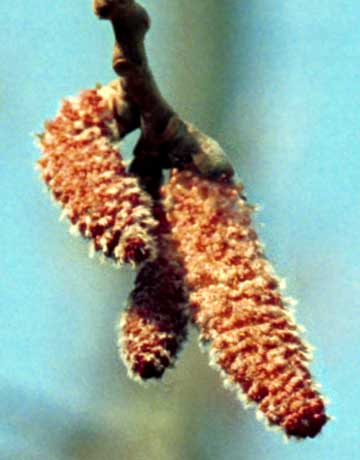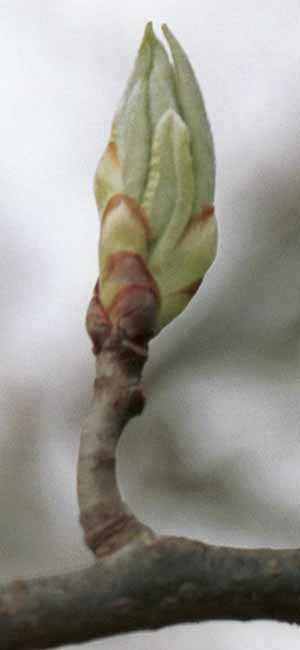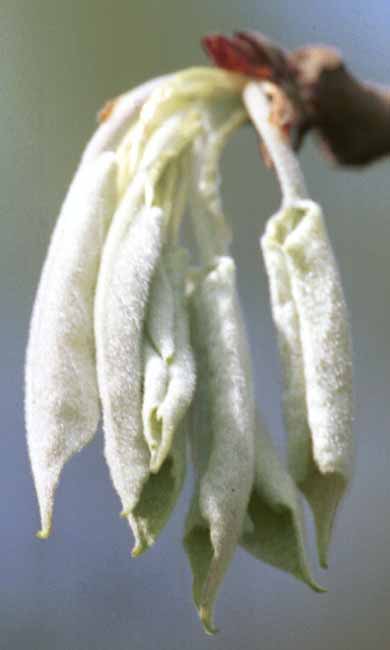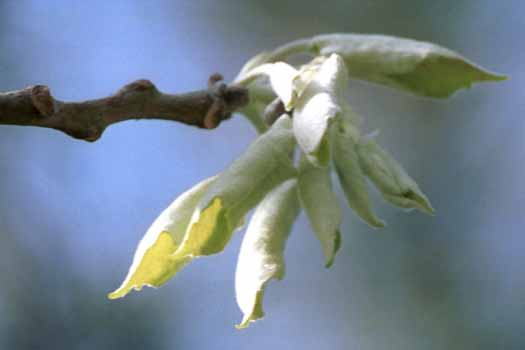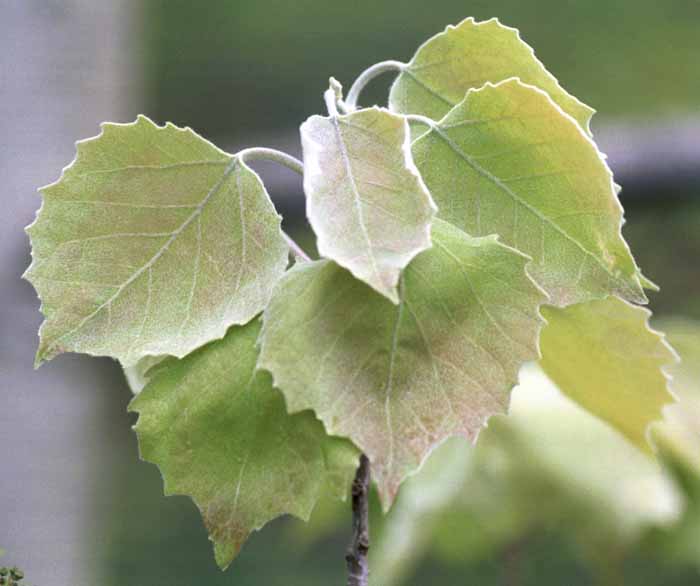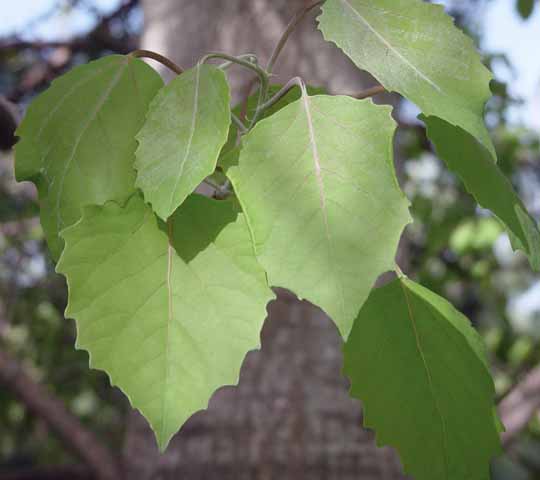| |
At first I thought of a particular tree as being a good-looking birch but difficult to photograph because its catkins were very high up. Nevertheless, around April 20, I took a few photos of its reddish catkins. After that, I ignored the tree in favor of easier models.
However, by May 4, when the following photo was taken, I realized that it wasn't a birch at all. I had become accustomed to seeing birch leaves growing by pairs on either side of a female catkin. Not only did this tree have but a single type of catkin, but it had a compound bud from which any number of leaves would grow.
Those buds high on the tree were already forming leaves, and by May 8, the lower buds were easy to photograph as they unraveled themselves into leaves. Many of the young leaflets hung down, as below. They were extremely fuzzy.
|
